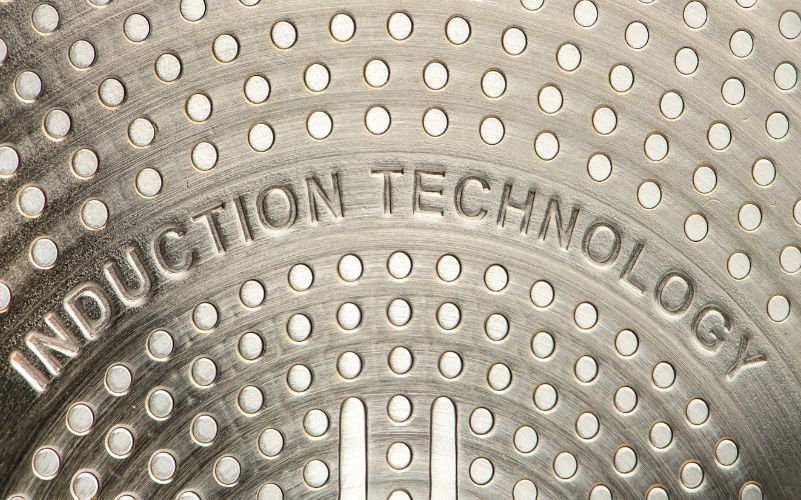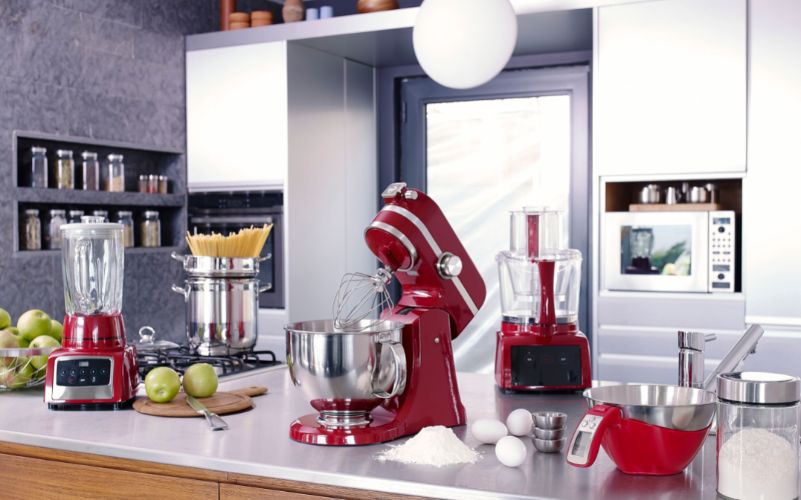- Induction Cooking Explained
- Advantages of Induction Cooking
- Disadvantages of Induction Cooking
- Energy-Efficient Cooking
- Quick and Consistent Results of Using Induction Cookware
- Easy Cleaning Techniques
- Financial Considerations of Using Induction Cookware
- Overcoming Challenges Using Induction Cookware
- Safety and Air Quality of Induction Cookware
- Final Remarks on Using Induction Cookware
- What are the pros and cons of Using Induction Cookware ranges?
- Frequently Asked Questions on Using Induction Cookware
Curious about the perks of using induction cookware? Let’s dive into the world of efficient cooking with energy savings, pan heats, consumer reports, and ovens pros and cons laid out. Say goodbye to uneven heating and hello to precise temperature control. Experience faster cooking times and easy cleanup with induction technology. But beware of potentially higher initial costs and compatibility issues with certain cookware types when using an oven or a specific cooking surface. Elevate your culinary game with induction cookware, making every meal a breeze. Ready to revolutionize your kitchen experience? Explore the advantages and drawbacks of induction cookware to make an informed decision that suits your cooking style.
Induction Cooking Explained
Basics of Using Induction Cookware
Induction cookware is designed specifically for induction cooktops, utilizing magnetic fields to heat the cookware directly. Unlike traditional gas or electric stoves, induction cooking heats the pan directly instead of the surface.
The key components of an induction cookware set include ferrous metal construction, a flat bottom, and compatibility with magnetic fields. This type of cookware is essential for efficient heat transfer and precise temperature control.
Using induction cookware offers benefits such as rapid heating, even cooking, energy efficiency, and safety features like automatic shut-off when the pan is removed.
How It Works
Induction cookware functions through electromagnetic technology that creates a magnetic circuit between the cooktop and the pan. When turned on, induction heating generates an electromagnetic field that excites iron molecules in the pan, producing heat.
This process ensures quick and uniform heating throughout the cookware, leading to faster cooking times and less energy consumption. The direct transfer of heat also allows for instant temperature adjustments and prevents heat loss during cooking.
The advantages of using induction cookware include precise temperature control, faster cooking times, consistent results, and a cooler kitchen environment due to minimal heat dissipation.
Cookware Compatibility
Choosing the right type of cookware is crucial for successful induction cooking. Materials like cast iron, stainless steel with a magnetic bottom, and enameled steel are compatible with induction cooktops due to their magnetic properties.
To test if your existing cookware is suitable for induction cooking, simply place a magnet on the bottom of the pan. If it sticks securely, the cookware is compatible. Avoid using non-magnetic materials like aluminum or copper that won’t work efficiently on induction stoves.
Advantages of Induction Cooking
Energy Efficiency
Induction cookware stands out for its energy efficiency, consuming less power than gas or electric stoves. This technology saves both energy and money in the long run. Compared to traditional stoves, induction cookware heats up faster and cooks food quicker, reducing overall cooking time. By using electromagnetic energy to heat the cookware directly, induction cooking is more environmentally friendly as it minimizes heat wastage.
Quick Cooking
Induction cookware excels in speeding up the cooking process by instantly transferring heat to the pot or pan. The direct heat transfer feature ensures that your food cooks evenly and efficiently. With rapid heating capabilities, induction technology reduces waiting time, making it ideal for busy individuals seeking quick meal preparation.
Consistent Results
One of the significant advantages of induction cookware is its ability to deliver consistent cooking results every time you use it. The precise control offered by this technology allows you to adjust temperatures accurately, leading to perfectly cooked dishes. Unlike conventional stoves that may have hot spots, induction cookware ensures even distribution of heat for uniform cooking.
Easy Cleaning
When it comes to maintenance, induction cookware simplifies cleaning tasks due to its smooth surface and lack of crevices where food can get stuck. The flat glass or ceramic top of induction cooktops makes wiping down spills effortless, requiring minimal effort to keep your kitchen looking neat and tidy. To maintain the cleanliness of your induction cookware, ensure regular cleaning with mild detergents and non-abrasive sponges.
Disadvantages of Induction Cooking
Initial Cost
When considering induction cookware, the initial cost might seem higher than traditional options. Comparatively, induction-ready cookware can be more expensive due to its specialized design. However, investing in quality induction cookware can lead to long-term savings and durability.
Learning Curve
Adapting to induction technology may pose a learning curve for beginners. To ease this transition, start by familiarizing yourself with the specific heat settings of your cooktop. Overcoming challenges such as adjusting to quicker cooking times and understanding compatible cookware types is essential for mastering induction cooking.
Surface Scratches
Induction cookware is susceptible to scratches, especially if not handled carefully. To prevent damage, avoid sliding pots and pans across the surface of the cooktop. Using soft cloths or sponges during cleaning can help maintain the integrity of your cookware. Consider investing in specialized cleaning tools designed for induction surfaces.
Energy-Efficient Cooking
Reducing Energy Bills
Switching to induction cookware can significantly lower energy bills due to its efficient use of electricity. Induction technology directly heats the pot or pan, wasting less energy compared to traditional electric stoves.
When using induction cookware, energy-efficient practices such as matching pot sizes to burner sizes can maximize efficiency. Using flat-bottomed pans ensures direct contact with the cooking surface, further reducing energy consumption.
By adopting induction technology, households can potentially save up to 50% on their utility bills. The precise and immediate heat control of induction cookware leads to quicker cooking times, translating into lower energy usage and cost savings.
Environmental Impact
Utilizing induction cookware has a positive environmental impact by reducing overall energy consumption. Unlike conventional ovens that heat the air around the food, induction technology heats the cookware directly, minimizing wasted energy.
Induction technology significantly reduces carbon footprint by consuming less electricity and emitting fewer greenhouse gases. This eco-friendly approach to cooking helps decrease reliance on fossil fuels and contributes to a cleaner environment.
Choosing induction cookware for your kitchen offers sustainability benefits by promoting energy efficiency and reducing environmental harm. By embracing this environmentally friendly cooking method, individuals can play a part in preserving natural resources for future generations.
Quick and Consistent Results of Using Induction Cookware
Speed of Cooking
Induction cookware enables quick cooking times, significantly reducing meal preparation duration. The technology’s efficiency benefits individuals with hectic schedules, ensuring meals are ready promptly. For instance, boiling water on an induction cooktop takes half the time compared to traditional methods.
Busy individuals appreciate the time-saving advantages offered by induction cookware. With faster cooking speeds, they can prepare meals swiftly without compromising on quality. Stir-fries, soups, and pasta dishes are examples of meals that can be cooked in a fraction of the time using an induction cooktop.
Temperature Control
Induction cookware boasts precise temperature control settings, allowing users to regulate heat accurately. This feature is beneficial for various cooking techniques that require specific temperatures for optimal results. From searing meats to simmering delicate sauces, the precise control enhances culinary outcomes.
Accurate temperature settings in induction cookware ensure consistent cooking results every time. To leverage this feature effectively, it is essential to understand how different recipes require varying heat levels. By adjusting the temperature accordingly, chefs can achieve perfect outcomes in their dishes.
Easy Cleaning Techniques
Non-Stick Surfaces
Non-stick surfaces on induction cookware prevent food from sticking, making cooking and cleaning hassle-free. The slick coating ensures effortless food release, reducing the need for excess oil or butter. To maintain the non-stick properties, avoid using metal utensils that can scratch the surface.
The advantages of non-stick surfaces extend to quick and easy cleaning after cooking. With minimal residue left behind, a simple wipe-down with a soft sponge is often sufficient. This feature not only saves time but also promotes healthier cooking by requiring less oil for preparation. To preserve the non-stick coating, handwashing is recommended over dishwashers.
Maintenance Tips
To prolong your induction cookware’s lifespan, follow specific maintenance tips. Regularly inspect the cookware for signs of wear and tear to address any issues promptly. Establishing a routine cleaning schedule prevents stubborn stains and buildup, ensuring optimal performance over time.
Regular maintenance routines are crucial for induction cookware, as they help retain heat distribution efficiency and prevent damage. Avoid using abrasive cleaners that can degrade the surface or affect its heating capabilities. In case of common maintenance issues like discoloration or warping, consult the manufacturer’s guidelines for appropriate solutions.
Financial Considerations of Using Induction Cookware
Long-Term Savings
Investing in induction cookware offers significant long-term financial benefits. The durability of induction cookware surpasses traditional options, ensuring prolonged use. With proper care, induction cookware can last for many years, reducing the need for frequent replacements. By choosing high-quality induction cookware, one can save on replacement costs over time.
The longevity of induction cookware sets it apart from conventional pots and pans. Traditional cookware may deteriorate faster, leading to more frequent purchases. In contrast, induction-compatible items are designed to withstand the test of time. This durability translates into cost savings in the long run. Opting for induction cookware means fewer replacements and more value for your money.
Upfront Expenses
When considering induction technology, it’s essential to understand the upfront expenses involved. While the initial cost of purchasing induction cookware may be higher than traditional options, the investment pays off in the long term. The value proposition lies in the efficiency and performance that induction technology brings to your kitchen.
The upfront expenses of acquiring induction cookware are offset by its numerous benefits. Although the prices may seem steep initially, the cost-effectiveness of induction technology becomes evident over time. By embracing induction cooking, you not only enhance your culinary experience but also make a smart financial decision for your household.
Overcoming Challenges Using Induction Cookware
Learning to Use
Understanding how to use induction cookware is crucial for achieving the best cooking results. Familiarize yourself with the specific features and functions of your cookware. Adjust your cooking techniques to adapt to the efficiency of induction technology.
Transitioning to induction cooking may require some practice. Ensure pots and pans have flat bottoms for optimal contact with the induction surface. Experiment with different heat settings to find what works best for various recipes.
Preventing Damage
Damage to induction cookware can occur due to improper handling or maintenance. Avoid sliding cookware on the induction surface, as it can cause scratches. Use caution when placing or removing items from the cookware to prevent dents.
To protect your cookware, consider using silicone or wooden utensils instead of metal ones that could scratch the surface. Regularly clean your cookware according to manufacturer guidelines to maintain its longevity. Proper storage is also essential to prevent unnecessary wear and tear.
Safety and Air Quality of Induction Cookware
Prioritizing Safety
Induction cookware prioritizes safety with advanced features like automatic shut-off functions for accident prevention. The technology ensures that the cookware only heats up when placed on the induction cooktop, reducing the risk of burns or fires. To maintain a safe cooking environment, always use induction-compatible cookware and avoid placing non-induction items on the cooktop.
Ensuring Air Quality
Induction cookware significantly contributes to improving air quality in your kitchen. Unlike traditional gas stoves, induction technology does not emit harmful gases like carbon monoxide or nitrogen dioxide during cooking. This reduction in emissions leads to cleaner indoor air, promoting a healthier environment for you and your family. By switching to induction cookware, you can enjoy cooking without compromising the air quality in your home.
Final Remarks on Using Induction Cookware
You’ve now explored the world of induction cookware, uncovering its numerous benefits and some potential drawbacks. From energy efficiency to quick cooking results, easy cleaning, and improved safety, induction cooking has a lot to offer. By considering financial aspects and overcoming minor challenges, you can fully embrace this modern cooking technology in your kitchen.
Now that you’re equipped with knowledge about the pros and cons of induction cookware, it’s time to make an informed decision. Whether you’re looking to upgrade your cooking experience or enhance your culinary skills, incorporating induction cookware into your kitchen setup could be a game-changer. So go ahead, weigh your options, and enjoy the benefits of efficient, safe, and convenient cooking with induction technology.
What are the pros and cons of Using Induction Cookware ranges?
There are pros and cons to induction ranges just as there are with any type of range. Here are some things to consider:
Pros:
- Induction ranges are more energy-efficient than other types of ranges. They use about 60% less energy than standard electric ranges.
- They are also faster than other types of ranges. Food can be cooked in half the time or less.
- They are safer than other types of ranges because they don’t heat up as much on the outside, so there is less risk of burns.
Cons:
- Induction ranges require special cookware that is made specifically for induction cooking. You cannot use regular pots and pans on an induction range.
- Induction cooking can be difficult to master, especially if you are not familiar with it. If you aren’t careful about setting the right heat level, your food may burn or cook unevenly.
Overall, induction ranges have many benefits, but they also come with a few downsides. If you are considering making the switch to induction cooking,




